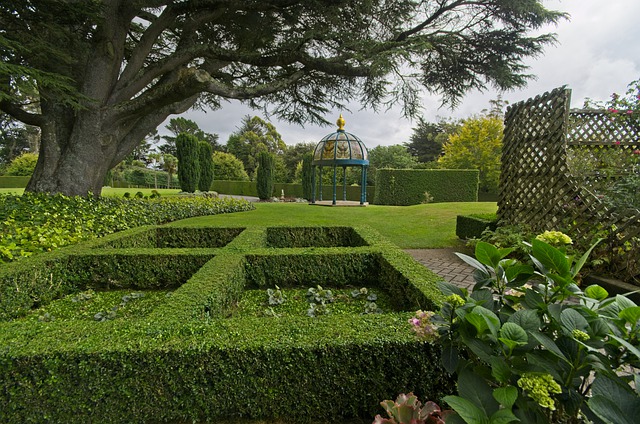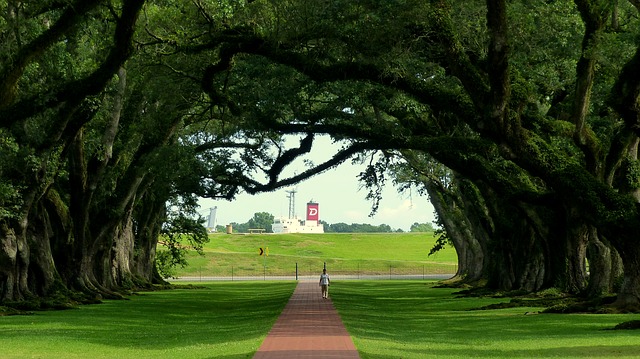Pollarding seems to have begun a long time back, predominately as a source of firewood. Ancient woodlands in the UK were pollarded before the Norman invasion of 1066 in a managed system, which gave commoners wood gathering rights. The advantage of pollarding over chopping down a tree outright was that the tree remained living-always a good thing-while a renewable source of timber (relatively young growth that was not too heavy o required too much work to process) was constantly available. Trees were cut above animal grazing height, typically around the 6-7ft. (2.0 m) mark and were recut over a regular cycle of up to 14 years. Woodland species included oak, lime, ash (the best source of firewood, as it burns happily while still green) hornbeam and beech- most of the common native hardwoods, in fact.
It is thought that ancient woodlands in populated areas were made up almost entirely of pollarded trees, such was the demand for firewood and timber. The idea of magnificent, mature trees covering the English landscape is something of a myth. Epping forest, north of London, is a fine example of how intensely managed woodland used to be: until 1878 there were something like 5, 00,000 pollards throughout the forest, at a density of 390 to 740 trees per hectare (about 2.5 acres). Nowadays, with a new pollarding regime in order, the number is more like 50,000, still the highest number of pollards in any Uk woodland. Interestingly, an act of parliament was passed in England in 1698 banning the pollarding of oaks, as straight were needed for shipbuilding, which must have reduced the number of pollards considerably.
Early woodland pollarding would have been purely functional, but as the craft turned into an art, pollarded trees started appearing in gardens for their visual appeal, not the raw materials they had to offer. Continental Europe is the home of the ornamental pollard, where they are variously used as street trees, shade trees, boundary trees and formal avenue trees. Plant trees (Platanus X hispanica) and, especially further north, species of limes (Tilia) are the tree of choice. With foraging livestock not a threat and practical considerations such as harvesting being less of an issue, the traditional dimensions of the woodland are no longer necessary, and a different set of practical and aesthetic considerations are applied to pollarding instead.
Street trees are often pollarded to restrict their size, and out of necessity these trees are pruned heavily and quickly. The planes of London, for example, can sometimes be cut quite brutally, but when done well the result is fantastic, with whole streets lined with coral-like sculptures reaching up to the clean air above the busy streets. They do provoke objections though-the arguments against pruning in general are perhaps strongest when it comes to street pollarding. However, I would point out that expecting trees in a city to be natural is slightly missing the point, especially when one considers that so little of our rural landscape is natural anyway, let alone the urban landscape. As for the people who cry ‘cruel’ at the sight of pollarding or any pruning for that matter-grow up, and lay off the Roald Dahl.
The sheer size of London’s pollards make them an unrealistic source of inspiration for most gardens, but head to the Continent, especially France where pollarding seems to be a part of the national identity, and you will find examples on a much inspiring scale. The ideally, there will be a set of side branches on your tree roughly at the 7 ft or so mark, and above them is where you should make your first cut of many, using either secateurs or a saw. If your 7 ft. mark is between flushes of branches, you can encourage branches to grow at this point by cutting the sides of the leader to force new shoots out which will later become side branches, although there are normally suitable branches close enough that this is not necessary.
The next decision is whether you would like angled, goblet-shaped branches, or totally flat, horizontal ones. If you decide on the flat look, now is the time to start training them. The simplest way is to tie down each branch, using the trunk to tie the string to. Alternatively, you can create splints and trestles to train the branches to, but this seems unnecessary to me, and soon falls apart unless done well. Appreciate that not all branches will train fully flat, and there is no point in forcing them, but what you can do is prune to a downward-facing side branch on that branch, continuing the outward growth but with a small kink. This produces an interesting look halfway between a goblet and a fully flat pollard, and is also a great way to extend an established pollard in the future of them. Two is not enough for a pollard, but if you have too many, thin out those that are too close together, leaving a well-spaced arrangement. Choose a diameter of about 5 ft. (1.5 m) for the tree, so the branches should grow to roughly 30 in. (75 cm) from the trunk-as they reach that mark, cut them back.





